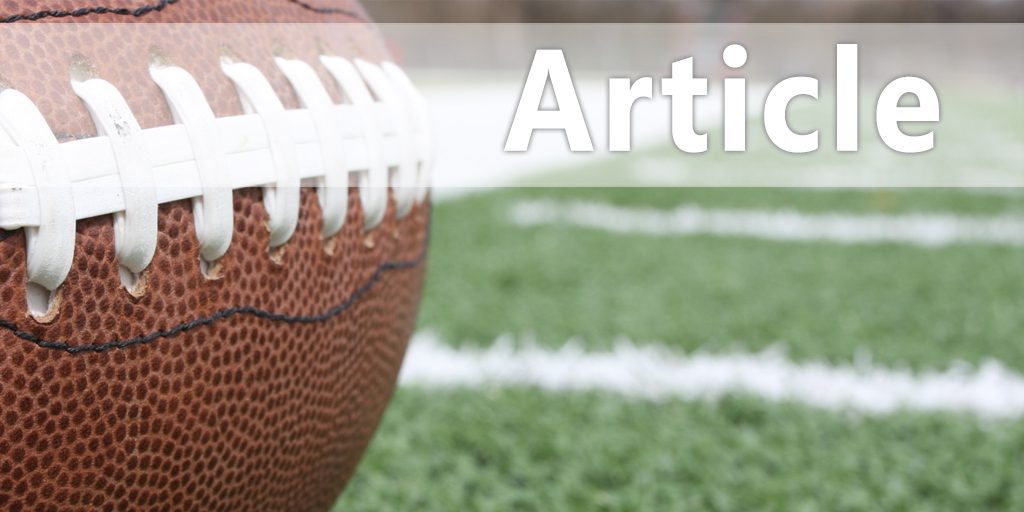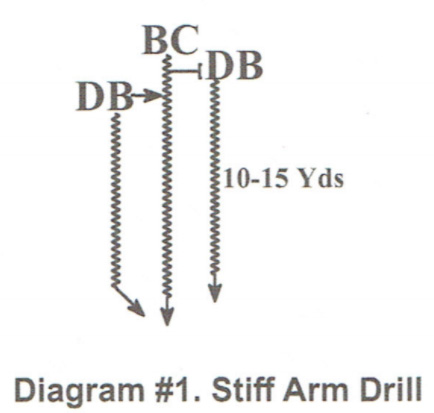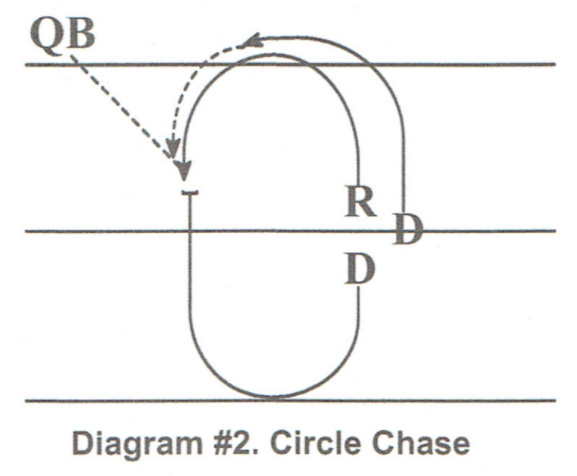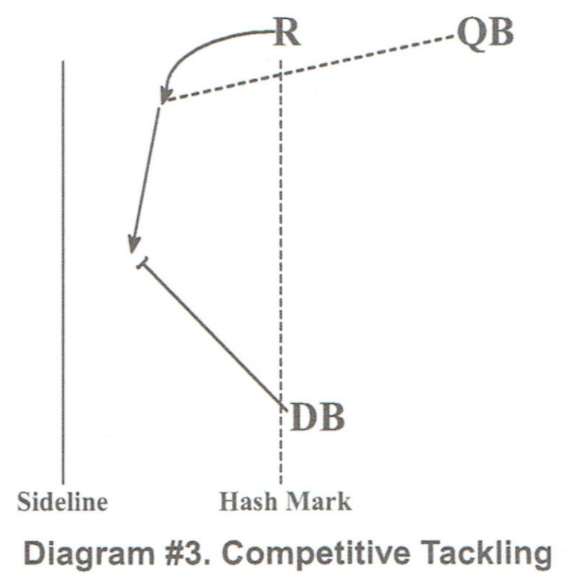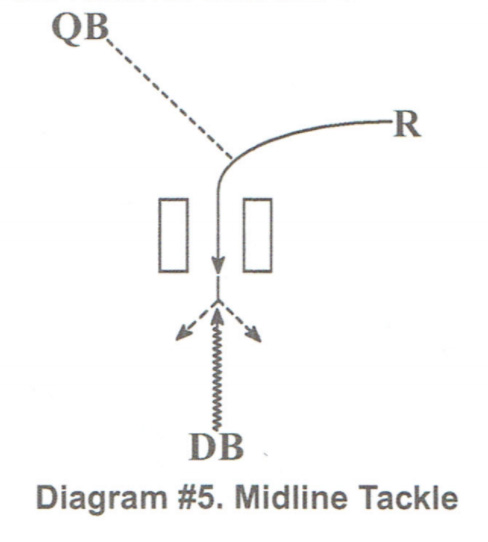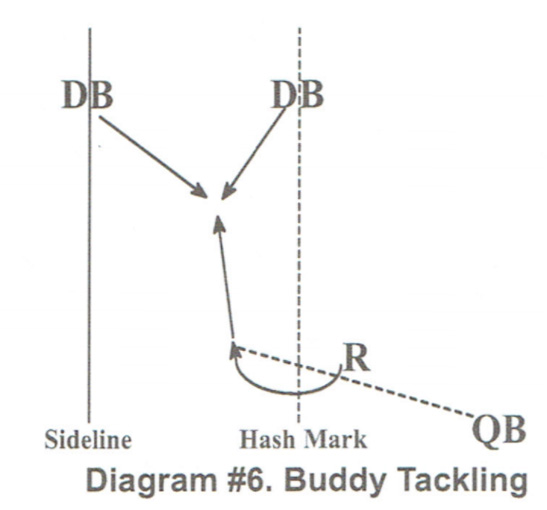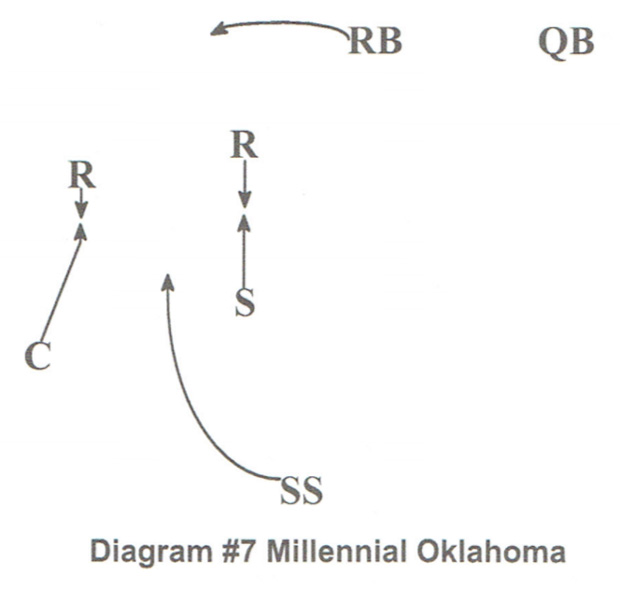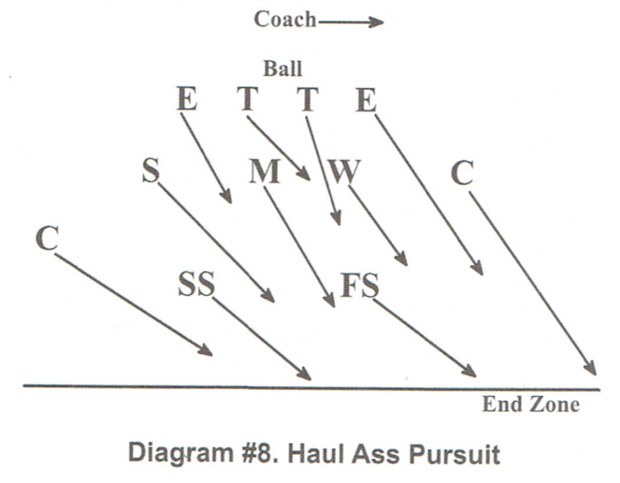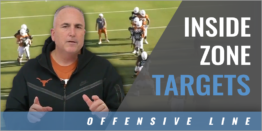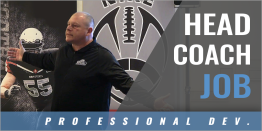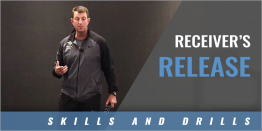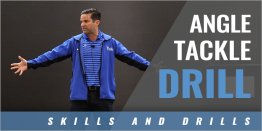| RPO's - Tackling - Turnovers |
| By: Kirby Smart - Univ. of Georgia
Originally Published in: Nike 2017 Coach of the Year Clinics - by Earl Browning Provided by: Nike Coach of the Year When our coaches come back from one of these events, we want them to share what they heard with the rest of the staff. It could be in the form of a written report. I am going to talk about some tackling and turnover items that I think are a little different. We started this two years ago and we got it from New England. I think everyone can agree that turnovers help you win games along with tackling. It does not matter what offense or defense you run, you must be able to tackle. After I talk about tackling and turnovers, I am going to jump into some assimilated pressures. I think that is the new age of third down defense. With all the offenses with RPO's and up tempo offense, you must have that as part of your scheme. I have been around some real good coaches. When I was with the Dolphins, Jason Garrett was on the staff along with a number of other good coaches, which I think coach Saban is included in that list. "The Ball, The Ball, and The Ball," was the theme of the Dallas Cowboys last year. It was all over the locker room, the training rooms, and even the rest rooms. It was in every individual locker and any place a player might see it. At the end of the day, that is what football comes down to. Can you protect the ball or can you get the ball. We are going to start our day directly after flex, with some kind of turnover circuit. We want to put the emphasis on turnovers. Last year, we were fortunate to get many turnovers. In the SEC, if you won the turnover battle, you won 74-percent of your games. If you win 74-percent in the SEC, you can make a lot of money and have your job a long time. If you win 35-percent of your games in the SEC, your ass will be gone. The number one item of how to keep your job is turnovers. That is the number one indicator of wins. It is not just turnovers and getting the ball. Your offense has to protect the ball and not turn it over. Those are the critical stats for us. What are you going to teach to make those kinds of plays? We needed a running backs coach. I interviewed six coaches for the job. All six coaches had different points of emphasis on how to secure the football. One coach has four points of pressure, one guy had five, and one coach had six points of pressure in securing the football. I have heard it all when it comes to point of pressure on the football to secure it when you run the ball. The biggest thing to me is there be no air in the cavity or carrying the ball loose. We are trying to simulate that on defense and take it away on offense. I am going to show you some drills we do that teaches those things. We got these drills from the New England Patriots. I show these drill tapes to our players and it kind of validates the drill. I think the Patriots have the best organization in football. These are things we do starting the first day of practice. This is a 2-on-1 stiff arm drill. (Diagram #1) We start with the offensive player as the one in the drill. The defensive players are on either side of the ball carrier. The ball carrier secures the ball in one arm and stiff arms with other arm. The defensive players squeeze in on the offensive ball carrier. The running back stiff arms the one defensive player. The other defensive player tries to rake the ball loose from the ball carrier.
It is a ball security drill and a turnover drill. The defender to the side of the stiff arm, tries to knock the stiff arm down when the offensive player tries to hit him with the arm. The other defensive player is trying to rake, hammer, or jerk the ball free. In this drill the stripper should be slightly behind the ball carrier. We feel when the running back tries to stiff arm, the ball gets loose against the body. Statistics tell us that more fumbles occur with the ball carrier going to the ground than any other position. In the NFL, 60-percent of the fumbles occur when the player is going down. That probably is because he is trying to break his fall. He is bracing for the fall and as he reaches to get one hand on the ground, the ball is coming away from his body. The second most is when the runner is making a cross-over move. That is when the tackler gets crossed up, reaches with his hand as the ball carrier goes by, and catches the ball. If there is any air between the ball and the body, he can hook the ball. The next drill is a "two ball" drill. It is the same drill set up. The ball carrier is carrying two balls. The defensive players are on both sides ripping and punching at the balls. The ball carrier has to get upper body lean and cover all points on the two balls. We work the drill from the sidelines to the hash marks. We are not trying to pick the ball carrier up, but rip at the ball. We work a bubble screen drill in practice. This is an example of how the two ball drill is used. Generally the quarterback throws the ball to the bubble receiver. We have tacklers converging on the ball from the inside and the outside. This is where you get the strip. The inside tackler gets to the ball carrier first and the outside tackler strips the ball. The next drill is called "fumble bum." This is a drill that simulates the ball carrier going to the ground. The ball carrier runs forward with a forward lean with the upper body. The defender is to the bail side stripping at the ball. The ball carrier has to reach down with the arm opposite the ball and touch the ground with his hand. When he reaches down to the ground with his hand, he has to keep the ball tight and not allow any air between the body and the ball. We put the quarterbacks through all the fumble and ball security drills also. They are no different than the other backs. At New England there is one exception to the rule. When Tom Brady does the drill, the defense does not go too hard at the ball. That is what I call good coaching because if he gets hurt in a drill, we all get fired. We work the drill daily, because the natural thing to do when the body starts to the ground is to expose the tips of the ball when it comes away from the body. We coach this drill hard. We work the two-on-one in the first two drills and one-on-one in the third drill. When the ball carrier puts his hand to the ground, if he can keep the ball tight to the body, you will reduce your turnovers by at least 20-percent. You have to practice those types of things because that is when the fumbles occur. We do not work the two-on-one and one-on-one fumble drills every day. They are simply fumble/ball security drills. Instead of doing those drills, we mix in a receiver fumble drill. (Diagram #2) This is a combination turnover and tackle mixture. We call it the "circle chase" drill. There are two defenders in the drill and one receiver.
We start with the receiver and one defensive back facing each other. The second defensive back is standing to the side. He is the chase defender. The receiver turns, runs the circle around the hump, and catches the ball. The defender standing to the side, chases the receiver following him around the hump. He is not trying to break up the pass. He is trying to distract the receiver and contest the catch. The defender facing the receiver, turns and runs the opposite direction from the receiver around the hump to his side. He is the tackler. He takes an inside out angle on the receiver and thuds him. The chase defender is punching at the ball. He is not trying to break up the pass. We want the pass and catch to occur. The defender wants to contest the pass. The reason we have dropped passes is we have scared receivers that do not like a contested catch. They do not like the contact. We are giving them contact in close quarters. The pass simulates a receiver coming back to the quarterback on a curl or come back catch. The chase defender does not grab the receiver. He pokes and punches at the ball. If the defender grabs the receiver from the trail position, he has a tendency to commit a "horse collar" tackle. The tackler running the hump away from the receiver turns back inside/out and depending on what the rules are makes the tackle. If we are in full gear, we have a tackle drill. If we are in shoulder pads and shorts, we could have a thud hit. If we are in shorts, we tag the receiver. This is probably the most realistic drill you can do because it happens all the time in ball games. In the drill if the chase defender pokes the ball out, the tackler scoops and scores. The drill is done in a ten yard box. As the receiver catches the ball and turns upfield on the tackler, he can move inside or outside the tackler. The tackler must maintain inside/out position on the receiver and make the tackle. At Georgia, we have many resources. I have a graduate assistant that charts every tackle throughout the season. He charts whether the tackle is sideline, midline, buddy tackle, or circle chase. The number one tackle for us and probably you too, is the buddy tackle. It is two defenders in a zone vicing the ball carrier. That gives you an insight of what to practice. Do not practice the one-on-one tackle all the time. Practice the buddy tackle with two defenders coming from inside and outside leverage on a ball carrier. That teaches the maintenance of leverage on the ball. About 60-percent of our tackling is buddy tackling. The midline tackle is a one-on-one tackle where the ball carrier has nowhere to go except into the tackler. That accounts for 5-percent of our tackling. Those are turnover drills. I want to jump to tackling drills. One of the worst things you can do is spend too much time practicing angle tackling. I played football for 10 years and angle tackling never did help me. If a ball carrier was running on an angle, I knew where he was going. Where the real problem with tackles occur is when the ball carrier has two ways to go. That is what you practice the most because that is what you see in games most of the time. The more real I can make the drill, the better off we will be. The rules we have in college football, if you do not simulate things like we do, we cannot practice tackling. We call this drill "competitive tackling." (Diagram #3) The angle tackling we do gives the ball carrier a two-way go. It is up to the defender to take one of those ways away. There is 20 yards between the receiver and the defensive back at the start of the drill. We throw a bubble screen to the receiver. He catches the ball and starts up field. We work the drill between the numbers and the sidelines.
We do this drill in shorts with no pads most of the time. Our players will react but there is no need to have contact in this type of drill. What we want to do is get into the proper position and attack on the proper angle. We want to prevent the cutback whenever possible. I actually think you can practice tackling better without pads. We do not want the defensive back to break down. We want the feet moving all the time as he approaches the ball carrier. We want to approach at full speed and scallop down. That means we continually move to the ball carrier without stopping in a break down position. It is better to work in shorts because there is no blow up on each repetition. The next drill is almost the same drill. (Diagram #4) The quarterback throws the ball to the back on a bubble screen. The defensive back is 20 yards away slightly inside the numbers of the field. He starts the drill by doing an up/down. He scrambles to his feet and makes the competitive tackle on the receiver. As the receiver catches the ball he runs through a gauntlet of players or managers. I have one inside and one outside. They grab at the ball as the receiver goes by them.
With all the spread teams we play, this is a realistic drill. This happens repeatedly in games. The defensive back has to attack the receiver inside/ out and make the tackle. In this drill I want someone attacking the ball after the receiver catches it. I want a contested ball whenever I can get it. This is a tackling drill, but we are still working on ball security. This is always my favorite talk. I am sure you have heard it from Mickey Andrews at Florida State, for years and I have heard it from Coach Saban many times. You cannot stop your feet and make a tackle. We all know that is true but can you break your player's habit of doing that. You can teach this in the off-season when they do not have pads on. We practice going full speed through the tackle and tagging off on the ball carrier. If you stop your feet, the running back is coming at 80 miles an hour and the defensive back is doing 10. He will run over the tackler and keep going. We have to keep the relative motion going throughout the tackle. We want to run through the inside hip of the ball carrier. Our statistics tell us that 25-percent of our tackling is sideline tackling. If you are practicing more or less sideline tackling, you need to reevaluate the way you coach tackling. The midline tackle makes up 7 - 9-percent of our tackles. However, it is where some of the biggest plays come from. The midline tackle is one-on-one tackling in a head on situation. In the midline drill, we work the receiver through two dummies. (Diagram #5) They catch the ball, bust between the dummies, and takes on the tackler. The tackler is in a midline tackle situation. He is head on the receiver with two ways to go.
We work the drill from the sideline to the numbers, but this situation occurs in the middle of the field between the hash marks. The tackler is by himself and must make the tackle. There is no sideline or other defenders to help with this tackle. The tackler has to approach the ball with a flat step into the ball carrier and run his feet. We give the ball carrier only one cut. He breaks inside or outside. In the 3-deep zone, we coach the middle safety to pursue the ball carrier on the exact same angle he is taking. He wants to mirror the path and press the line of scrimmage. When the runner turns the ball up into the alley, the middle field safety is the alley runner and has to make a midline tackle. That makes up 8-percent of the tackles, however, that is the one they show on ESPN if you do not make the tackle. Working these tackles is where we use the "donuts." The round tackling dummies that look like big wheels. We use them to teach the new tackling techniques we use in today's game. The last tackling drill we do has to do with buddy tackling. (Diagram #6) These are 60-percent of the tackles in a game. If you are playing man coverage, you may not have many of these tackles. However, if you play any type of zone coverage, there will be buddy tackles. This is a two-on-one tackling drill. We do the drill between the sidelines and the numbers. The receiver catches the ball and runs upfield.
This is a good offensive drill because the receiver is not one-on-one. They start chirping about the contact because they are going to get hit in this drill. The coaching point from this drill is the leverage and the redirect of the second tackler. Very seldom will the tackler get a simultaneous hit on the receiver. One will be slightly ahead of the other. That contact will send the receiver in the direction of the hit. If the second tackler does not redirect his angle, he will overrun the ball. They must maintain their inside/out and outside/in angles throughout the tackle. You have seen it many times. There are two tacklers converging on the ball. The inside tackler gets a big hit on the ball carrier, but does not knock him to the ground. He only bounces him to the outside. If the second tackler does not redirect his charge, he is inside the ball carrier as he runs up the field. In the drill, the receiver does not want to run down the center of the area. He wants to choose one side or the other. That means the hits will not be simultaneous. The inside or outside tackler has to redirect. In a five minute period, we are going to get 20 repetitions. We are going fast. In the pass skeleton drill, the buddy tackle may happen three times. The tackle can be on the sidelines, when we work the drill for middle of the field tackling. The tacklers can never give up their leverage. If the outside leverage tackler approaches the ball carrier, the ball carrier should never get outside of him. He has help to the inside and must maintain leverage from the outside. The bubble drill is my favorite drill. All the spread coaches will tell you how fast they get the ball to the outside. However, no one ever talks too much about that receiver that gets the crap knocked out of him. Receivers love to catch the ball but do not necessarily like the contact on the catch. That is what receiver coaches do not talk about. The only way to combat a great receiver is the physical aspects of the game. If you have a big physical player who likes contact, they have a receiver who likes the ball. This drill is called "Millennial Oklahoma." (Diagram #7) Most of you know what an Oklahoma drill looks. That is an offensive lineman against a defensive lineman with a running back behind the offense and a linebacker behind the defense. They run into a limited space between two dummies. This drill is Millennial Oklahoma. It is a three-on-three full contact drill.
In season, we start practice after the turnover drills with this drill. We align three receivers into the field. With a running back and two wide receivers. The defense aligns and plays the coverage called. We can be in cover-2, mini, quarters, or clamp (read-2). The offense can throw the ball to any receiver they want. It does not matter who they throw it to, the other two receivers in the drill have to block. The defenders react and go knock the crap out of the blockers and make the tackle on the ball carriers. This is a drill played in space. The Oklahoma drill we know was played in a tight box. This drill is in space and is very real to what we see. If the offense is going to throw the bubbles, you better prepare for them on defense. This drill does that. I promise you are going to see this type of play. You have to practice attacking blockers, getting off those blocks, and making tackles. The receivers came to me and almost revolted. They were getting the crap knocked out of them because the defensive backs knew it was a bubble drill. We adjusted the drill to keep the secondary honest. About every fourth play, we run a receiver by the corner or safety to make them play coverage before they attack the blockers. If the defenders are facing a pass pattern instead of a bubble, they have to honor the coverage and cannot simply play the bubble. That is fair to the receivers. However, part of this drill is to create toughness among the defensive backs and receivers. This drill is as good for the receivers as it is for the defensive backs. They want it and need to do it. When we go to 7-on-7, every fourth pass is a bubble screen. We are actually working on more drop back passing than we will see in a game. We are seeing more and more of the RPO passing than the drop back throws. This is millennial Oklahoma drill or a new way of drilling the coverage. Teams that run the RPO's release their linemen to go down field. To keep that from being a penalty, they must throw the ball quickly. The thing I do not like to see are these drills done with your own players in a non-contact drill. You do not get the speed you will see in the games. They are not going as hard in practice drills that are not competitive. Those drills are not real until you put the players in a competitive drill. We do a simple pursuit drill. I have tried every kind of pursuit drill known to man. I think Coach Tucker, our defensive coordinator, came up with the best one. He did it with the Chicago Bears and the Jacksonville Jaguars. The drill is called "haul ass pursuit." (Diagram #8) It is easy to set up. All you need is grass.
We sell the players on the fact that if they do it right, we will only do it once. We film it and that is the first thing we see in the defensive meeting the next day. Coach Andrews graded the effort. He was the hardest grading coach I have ever seen. He gave you a thumbs up or thumbs down. All we do is snap the ball. The defense hauls ass in the direction the coach indicates. They sprint through the end zone. If it is not done perfectly, they go again. What we are looking for is effort. It is an effort play. It is hard to simulate angles in a pursuit drill. We want them to sprint as hard as they can go and end up in the end zone. That means the fat guys too. We grade the film and record the "loafs" in the film. One way for a defensive lineman to get a loaf is to have another lineman pass him up. We do an intercept pursuit drill. (Diagram #9) We have barrels set up in the secondary where the linebackers and defensive backs are to drop. We give them a defense to run. The coach shows pass and the defenders retreat to the barrels marking their land marks. The down linemen rush the passer which is the coach. The coach gives them a lateral wave drill and then throws the ball to one of the deep backs. He intercepts the ball and every one runs to the wall. As the return man passes them, they turn and sprint into the end zone. Everyone has to get in front of the ball. This is a perfect drill also.
EDITOR'S NOTE: The rest of Coach Smart's presentation is on film, and the sound malfunctioned. The points covered in the first parts of his lecture were shown in the film. |
